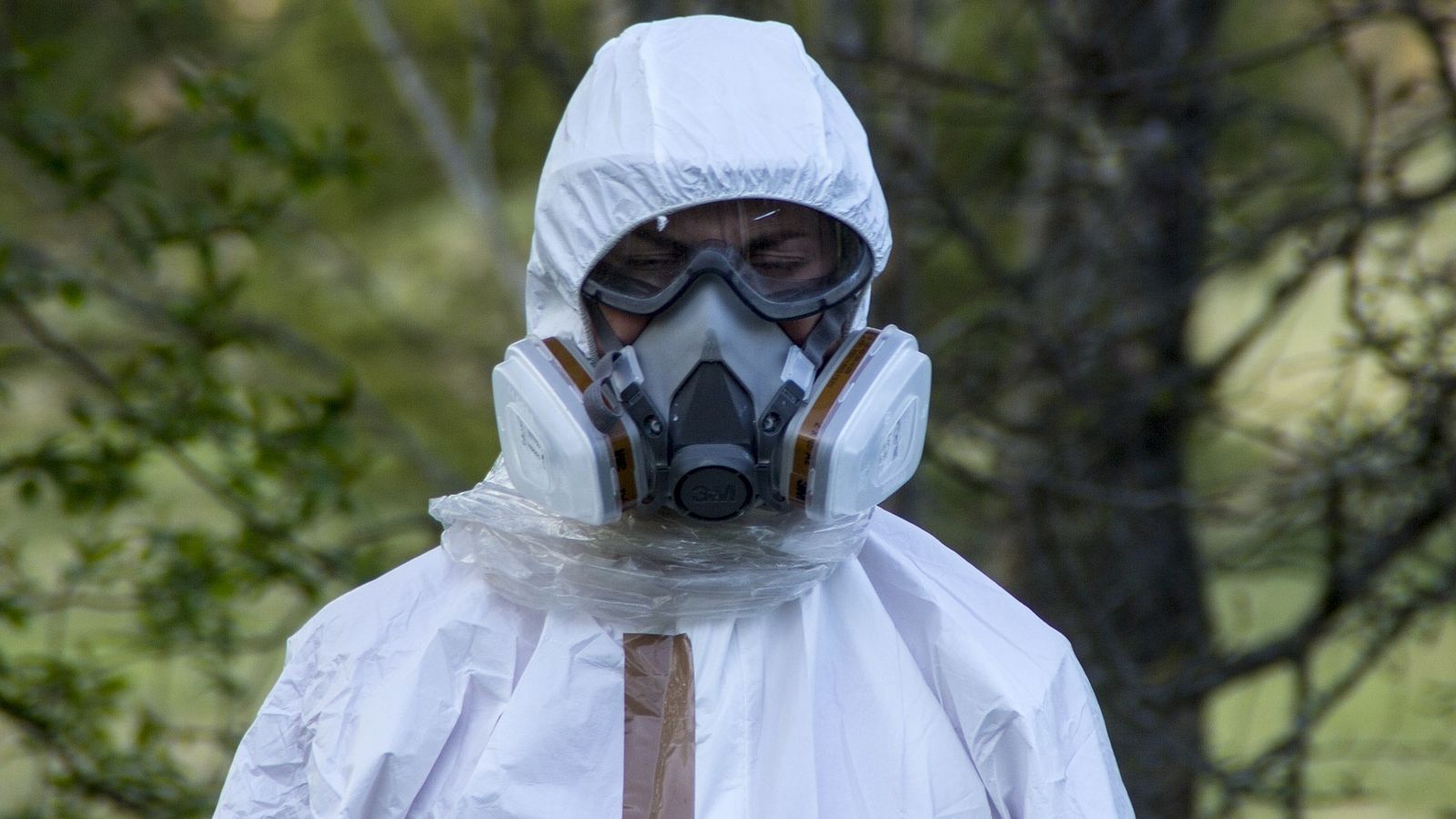Asbestos
Asbestos is a group of naturally-occurring fibrous materials.
More than 3,000 building products contained asbestos before it was banned in 2003.
Asbestos is common in NSW homes and buildings built or renovated before 1990.
It is difficult to determine whether materials contain asbestos by looking at them. Some products that may contain asbestos include:
- vinyl floor tiles
- cement roof sheeting and wall lining
- lagging and jointing material
- fire blankets.
Types of asbestos
There are two types of asbestos: friable and non-friable.
Friable asbestos can be crumbled, pulverised or reduced to a powder in the hand. This type of asbestos is high risk.
- Only a Class A licensed asbestos removalist can remove asbestos.
- Visit SafeWork NSW's website to find suitable license-holders.
Examples of common friable asbestos products include:
- asbestos rope
- loose-fill asbestos, like Mr Fluffy. Builders used this type of asbestos as ceiling insulation in many houses in Canberra, Queanbeyan, and surrounding regions (houses built in Eurobodalla before 1990 may contain Mr Fluffy asbestos insulation)
- insulation around hot water pipes.
For information on loose-fill asbestos ceiling insulation material installed by Mr Fluffy, please contact ServiceNSW on 13 77 88 or visit NSW Fair Trading's frequently asked questions about loose-fill asbestos.
Non-friable asbestos is mixed with cement or other bonding materials. It is also known as bonded asbestos. When dry, non-friable asbestos cannot be crumbled, pulverised or reduced to a powder by hand pressure. This type of asbestos is lower risk.
- If you use appropriate safety precautions, you are permitted to remove a maximum of 10m2 of bonded asbestos from your home in NSW.
- If removing more than 10m2, you must hire a qualified asbestos removalist or obtain a SafeWork NSW bonded asbestos removal licence.
Non-friable asbestos can become friable if the asbestos is damaged or old.
Examples of common non-friable asbestos products include:
- asbestos cement sheeting (also known as 'fibro')
- vinyl asbestos floor tiles
- asbestos cement.
How to identify asbestos
You can't tell if a material contains asbestos by looking at it. If you built or renovated your property before 1990, it most likely has asbestos-containing materials.
- You can use the asbestos checker on the Asbestos in NSW website to help you identify products that may contain asbestos around your home.
- The only way to confirm the presence of asbestos is to use a licensed asbestos assessor who will test a sample of the material.
- If you plan to demolish or renovate your home, it is important that you contact a licensed asbestos assessor before you start work.
How to remove and dispose of asbestos
When building materials that contain asbestos are disturbed or damaged, there is a risk that you can inhale the asbestos fibres. These fibres they can settle deep inside the lungs. This may cause inflammation, scarring and lead to asbestos-related diseases.
To protect your health, and avoid costly fines or clean-up costs, you must follow the legal and safety requirements for managing asbestos.
Before you start any home maintenance work or renovation, visit the Asbestos Awareness website for important information and guidance.
There are legal and safety requirements for the management of asbestos. It's important to follow these requirements to protect your health and to avoid costly fines or clean-up costs.
- You can remove less than 10m2 of non-friable asbestos in NSW if you use appropriate safety precautions. It is also important that you use the correct personal protective equipment (PPE).
- A tradesperson can remove less than 10m2 of non-friable asbestos on behalf of the homeowner. They must still follow strict safety standards, including the SafeWork NSW Code of Practice.
- If you need to remove more than 10m2 of non-friable asbestos, you must:
- hire a qualified asbestos removalist
or - get a SafeWork NSW bonded asbestos removal licence.
- hire a qualified asbestos removalist
- If you need to remove any amount of friable or loose-fill asbestos, it is mandatory that you engage a licensed class A asbestos removalist. Tradespeople are not qualified or permitted to remove friable asbestos. Friable or loose-fill asbestos is much more likely to release dangerous asbestos fibres into the air.
- 10m2 = 5m x 2m wall.
- 10m2 = wall sheeting from one small bathroom.
Asbestos is classified as a hazardous material. There are strict guidelines, regulations and legislation that applies relating to how you should manage, package and transport the asbestos, and where you can dispose of it.
- In Eurobodalla, you can only dispose of asbestos waste at our Brou and Surf Beach waste management facilities.
- The asbestos must be wet down, wrapped in thick plastic or double wrapped, taped down and labelled as asbestos.
- You must provide 24 hours' notice to the landfill before disposal.
- For guidance on correct asbestos disposal procedures, visit our asbestos disposal web page.
- If you need to transport more than 10m2 or 100kg of asbestos waste, use the EPA’s WasteLocate system. You must use this system at all times - whether you remove asbestos yourself or if a professional does it. We recommend that you use a licensed asbestos removalist, who will know how to use WasteLocate and help you comply with the law.
- For information on the responsibilities of handling and management of asbestos, see our web page.
More information
- Asbestos Awareness: Asbestos
- NSW Health: Asbestos and health risks
- NSW Government: Asbestos in NSW
- NSW Fair Trading: Loose-fill asbestos
- SafeWork NSW: Asbestos
- Australian Government Department of Health: Asbestos - a guide for householders and the general public
Contact us
If you need more information, please contact our public and environmental health team:
- T: 02 4474 1310
- E: Public and environmental health team

